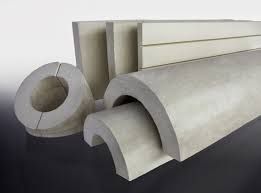The rising usage of calcium silicate insulation in the transportation and power generation sectors is likely to trigger expansion of the global calcium silicate insulation market in the years to come. The global market is likely to be driven by factors such as steadily increasing capacity but also end-user joint venture activities in high-growth regions. In terms of value, Asia Pacific is likely to be one of the most important regions for global calcium silicate insulation market, trailed by Europe and North America.
The growth is likely to be fueled by rising investments in electricity production capacity and urbanization. In the forthcoming years, substantial government spending on infrastructural expansion in developing nations such as Brazil, China, and India, is likely to benefit the global calcium silicate insulation market.
In the forthcoming years, infrastructural expansion in markets such as South Korea, India, and Brazil, is predicted to improve industrial activity and raise insulating material usage. China, the US, Australia, the UK, and France, respectively, ended up spending 5.57%, 0.52%, 1.69%, 0.92%, and 0.84% of their GDP on infrastructure building and maintenance in 2019. Numerous infrastructural projects, such as urban transformation plans, the smart city initiative, commercial parks, and new industrial estates, have been implemented in India, and are likely to strengthen growth of the global calcium silicate insulation market in the years to come. As a result of the rise in expenditure and industrial activities, the calcium silicate insulation market is predicted to develop significantly.
Rising Demand for Green Buildings is Expected to Trigger Expansion of the Global Market
Numerous infrastructure funders are intensifying their emphasis on environmental, social, and governance (ESG) and seek to finance in ecologically sustainable assets in response to heightened pressure for environmental protection. In addition to that, a number of models and guidelines have been developed to incorporate climate-related concerns into investment choices and allocate funds to ecologically friendly initiatives. As ESG reporting has become more common and regulatory pressure mounts, it is logical to assume that more demand for these assets is likely to rise in the future. Both disease outbreak and changing climate are global issues, and there is an opportunity to demonstrate resilience for the latter while dealing with the former.
The growing popularity of green buildings has resulted in a rise in demand for green materials. In the construction industry, calcium silicate insulation is commonly employed. The need for calcium silicate is expanding in tandem with the rising demand for green construction materials that have great features including fire resistance, moisture resistance, and prolonged shelf life. In addition to that, the European Calcium Silicate Producer Association (ECSPA) seeks to support the European building materials industry’s long-term profitability by supporting sustainable housing and infrastructural solutions.
The market for the high temperature range sector is likely to be driven by the rising glass, aluminum, glass, cement, as well as petrochemical industries in developing nations, as well as a comeback in power generation as well as other industrial activity in developed countries. The global calcium silicate insulation market is being driven by the demand for long-term thermal insulation in high-temperature processing businesses, as well as increasing regulations that support it.
Get a glimpse of the in-depth analysis through our Report Brochure
Increasing Investments in Infrastructural Development in India and China to Drive Asia Pacific Market
Asia Pacific is likely to dominate the global calcium silicate insulation market as a result of rising investments. Besides, expansion of industrial production capacity across various end-use industries, particularly power generation, metal processing, petrochemical, transportation, and industrial infrastructure activities in developing economies, such as India and China. These increase the need for thermal insulation, which is likely to help the Asia Pacific calcium silicate insulation market develop considerably. Due to its rapid industrialization as well as low-cost manufacturing techniques, China is considered one of the most important markets for calcium silicate insulation in Asia Pacific. Since the region’s manufacturing costs are lower than those in other regions, the majority of key players in the calcium silicate insulation market have manufacturing capacity in the Asia Pacific.



































